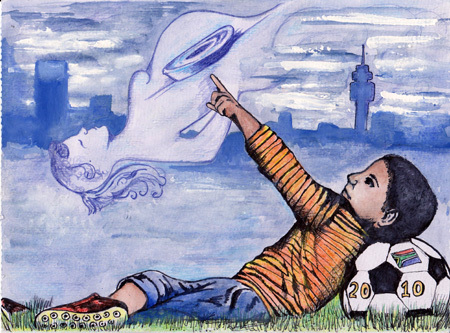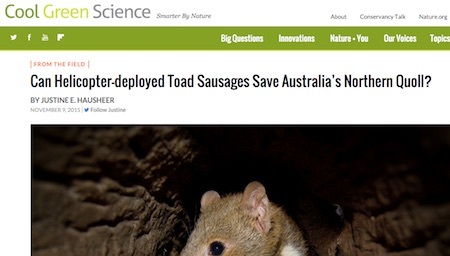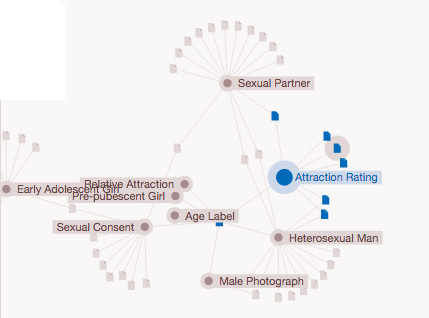Marc Abrahams's Blog, page 297
November 9, 2015
The quolls, the toad sausages, and the helicopter
Today’s headline of the day: “Can Helicopter-deployed Toad Sausages Save Australia’s Northern Quoll?” It appears in the Cool Green Science blog.
BONUS: The study to which this pertains: “Conditioned taste aversion enhances the survival of an endangered predator imperilled by a toxic invader“

Beijing traffic jams and the number 4
Excessively polluting and timewasting heavy traffic congestion in central Beijing causes significant distress to drivers and residents alike. In a drive to identify root causes, researchers have put two and two together and come up with an improbable answer – the number ‘4‘.
“In this work we estimate the effects of traffic congestion on subjective well-being in Beijing, China. In response to heavy congestion and pollution, Beijing restricts vehicle usage on the basis of license plate numbers. On any given weekday, private vehicles with plates ending in one of two digits may not drive within the 5th Ring Road from 7 am to 8 pm. As a result each vehicle is restricted one day per week. However, superstitions regarding the number four – which is homonymous with ‘death’ in Chinese – dramatically reduce the proportion of vehicles with license plates ending in four. We thus expect, and find, large increases in traffic congestion on days on which plates ending in four are restricted.”
See: ‘Superstitions, Street Traffic, and Subjective Well-Being’ by Michael L. Anderson, Fangwen Lu, Yiran Zhang, Jun Yang, Ping Qin, NBER Working Paper No. 21551, Issued in September 2015
A full copy may be found here

A scholarly book review — Fish and Chips: A History
Here’s a new review of a new history of fish and chips in Britain:
 “Book Review: Fish and Chips: A History,” Spencer Swain, Cultural Sociology, vol. 9 no. 4, December 2015, pp. 590-592. (Thanks to Dan Vergano for bringing this to our attention.)
“Book Review: Fish and Chips: A History,” Spencer Swain, Cultural Sociology, vol. 9 no. 4, December 2015, pp. 590-592. (Thanks to Dan Vergano for bringing this to our attention.)
The author, at Leeds Beckett University, UK, reviews the book Fish and Chips: A History [Reaktion, London, ISBN 9781780233611, 176 pp.], by Panikos Panyani [pictured here], who is a Professor of European History at De Montfort University in Leeds:
“Panikos Panyani provides a fascinating insight into the history and identity of fish and chips through five thought-provoking chapters which discuss the dish’s ‘Origin’, ‘Evolution’, ‘Britishness’, ‘Ethnicity’ and ‘Meaning’. This is done by narrating the cultural dynamics which enabled fish and chips to emerge as a staple of British identity, charting the technological, social and economic factors which both helped and hindered its success.”

November 8, 2015
Rob Lowe’s Research on Men’s Ratings of Sexual Attractiveness of Adolescent Girls in Bulgaria
Rob Lowe and two colleagues write about their research on men’s ratings of the sexual attractiveness of adolescent girls in Bulgaria. Their study is:
“Heterosexual Men’s Ratings of Sexual Attractiveness of Adolescent Girls: A Cross-Cultural Analysis,” Paul Bennett , Rob Lowe, and Hristina Petrova, Archives of Sexual Behavior, November 2015, Volume 44, Issue 8, pp. 2201-2206. The authors, at the University of Swansea, UK, report:
“we examined ratings of sexual attraction to photographs of (the same) adolescent girls (Tanner stages 3–4) labelled as either 14–15 years or 16–17 years old, women, and men. Ratings were made by Bulgarian heterosexual men by pressing buttons on a response box which recorded the ratings made and the time in milliseconds taken to respond. Despite the age of sexual consent in Bulgaria being 14 years, the pattern of findings did not differ from those found in the UK, where the age of consent is 16 years. That is, mean ratings of the sexual attractiveness of the girls labelled as younger were lower than those of the (same) girls labelled as older, and those of the women.”
Here’s a wordy graphic from the journal’s publisher:

The Impossible Expertise of Self-Perceived Experts
David Dunning, who won an Ig Nobel Prize for his landmark study of incompetent people who believe themselves to be competent, has now done a study about people who believe themselves to be experts. The new study is:
 “When Knowledge Knows No Bounds — Self-Perceived Expertise Predicts Claims of Impossible Knowledge,” Stav Atir, Emily Rosenzweig, David Dunning [pictured here], Psychological Science, vol. 26 no. 8, 2015, pp. 1295-1303. The study explains:
“When Knowledge Knows No Bounds — Self-Perceived Expertise Predicts Claims of Impossible Knowledge,” Stav Atir, Emily Rosenzweig, David Dunning [pictured here], Psychological Science, vol. 26 no. 8, 2015, pp. 1295-1303. The study explains:
“People overestimate their knowledge, at times claiming knowledge of concepts, events, and people that do not exist and cannot be known, a phenomenon called overclaiming. What underlies assertions of such impossible knowledge? We found that people overclaim to the extent that they perceive their personal expertise favorably. Studies 1a and 1b showed that self-perceived financial knowledge positively predicts claiming knowledge of nonexistent financial concepts, independent of actual knowledge. Study 2 demonstrated that self-perceived knowledge within specific domains (e.g., biology) is associated specifically with overclaiming within those domains. In Study 3, warning participants that some of the concepts they saw were fictitious did not reduce the relationship between self-perceived knowledge and overclaiming, which suggests that this relationship is not driven by impression management. In Study 4, boosting self-perceived expertise in geography prompted assertions of familiarity with nonexistent places, which supports a causal role for self-perceived expertise in claiming impossible knowledge.”
The 2000 Ig Nobel Prize for psychology was awarded to David Dunning and Justin Kruger, for their modest report, “Unskilled and Unaware of It: How Difficulties in Recognizing One’s Own Incompetence Lead to Inflated Self-Assessments.” [The study was published in the Journal of Personality and Social Psychology, vol. 77, no. 6, December 1999, pp. 1121-34.]
Since that time, the “Dunning-Kruger Effect” has gained wide recognition, and helped many persons cope with the supposedly competent people who surround them.

November 7, 2015
Reduced Anxiety in Forensic Inpatients after a Long-Term Intervention with Atlantic Salmon
This is, so far as we are aware , the first published study that concentrates on xnxiety levels in forensic inpatients after a long-term intervention with Atlantic salmon:
 “Reduced Anxiety in Forensic Inpatients after a Long-Term Intervention with Atlantic Salmon,” Anita L. Hansen, Gina Olson, Lisbeth Dahl, David Thornton, Bjørn Grung, Ingvild E. Graff, Livar Frøyland, and Julian F. Thayer [pictured here], Nutrients, vol. 6, 2014, 5405-5418. (Thanks to Ivan Oransky for bringing this to our attention.) The authors, at the University of Bergen, Norway, Haukeland University Hospital, Bergen, Norway, Sand Ridge Secure Treatment Center, Mauston, Wisconsin, USA, Ohio State University, USA, and other institutions, report:
“Reduced Anxiety in Forensic Inpatients after a Long-Term Intervention with Atlantic Salmon,” Anita L. Hansen, Gina Olson, Lisbeth Dahl, David Thornton, Bjørn Grung, Ingvild E. Graff, Livar Frøyland, and Julian F. Thayer [pictured here], Nutrients, vol. 6, 2014, 5405-5418. (Thanks to Ivan Oransky for bringing this to our attention.) The authors, at the University of Bergen, Norway, Haukeland University Hospital, Bergen, Norway, Sand Ridge Secure Treatment Center, Mauston, Wisconsin, USA, Ohio State University, USA, and other institutions, report:
“The aim of the present study was to investigate the effects of Atlantic salmon consumption on underlying biological mechanisms associated with anxiety such as heart rate variability (HRV) and heart rate (HR) as well as a measure of self-reported anxiety…. The findings suggest that Atlantic salmon consumption may have an impact on mental health related variables such as underlying mechanisms playing a key role in emotion-regulation and state-anxiety.”
BONUS (probably unrelated): The Ig Nobel Prize-winning study “Neural correlates of interspecies perspective taking in the post-mortem Atlantic Salmon: An argument for multiple comparisons correction“

November 6, 2015
Hysterical ferroelectric banana misinterpretations
Prof. James F. Scott, FRS of the Cavendish Laboratory, Cambridge UK, has published advice (in the Journal of Physics: Condensed Matter) for the attention of fellow ferroic researchers.
“If your ‘hysteresis loops’ look like figure 1(a), please do not publish them. Publish data that are saturated and have a region in Q versus V that is concave. Bananas are not ferroelectric, and it is easy to be misled by closed Q (V) loops.”
“We show that ordinary bananas exhibit closed loops of switched charge versus applied voltage that are nearly identical to those misinterpreted as ferroelectric hysteresis loops in crystals.”
See: ‘Ferroelectrics go bananas’ J. Phys.: Condens. Matter, 20 (2008) 021001.

November 5, 2015
Possible Effect of the World Cup on Births
The World Cup brings more than passing excitement to the world. This newly published study suggests that the World Cup also brings, eventually, a change in the world population:
“The sex ratio at birth in South Africa increased 9 months after the 2010 FIFAWorld Cup,” Gwinyai Masukume and Victor Grech, Early Human Development, epub 2015. The authors report:
“Results: February and March 2011 about 9 months after the World Cup, had the highest observed sex ratio at birth (relatively more male births) of 0.5063 for the period 2003 to 2012. The observed sex ratio at birth in the considered two months of 2011 was 0.63% (p = 0.02) greater than the sex ratio at birth for corresponding periods from 2008 to 2012. The increase noted in 2011 corresponds to more than 1000 extra male births than expected for February and March 2011.
“Conclusion: The 2010 FIFAWorld Cup was followed about 9 months afterwards by a significant increase in the sex ratio at birth. The main mechanism driving the observed increase in the sex ratio at birth in South Africa is most likely more frequent sexual intercourse at population level during the tournament.”
Dr. Masukume sent us this drawing, by Genevieve Louw, to accompany the news. (Clarification, for anyone who might need it: the round object represents both a soccer stadium and a uterus.)

There’s a discussion of this, on The Conversation.
BONUS CONTEXTUAL INFO: Here’s some excitement-of-sports context for Americans, for whom the World Cup is still a wondrously new concept: 1. “Super Bowl outcome’s association with cardiovascular death“; and 2. “Comparison of total and cardiovascular death rates in the same city during a losing versus winning super bowl championship“.

The Allen-Alchian (theorem) Explains Why the Internet Is Made of Cats
 Dr. Jason Potts Centre Fellow and Project Leader in the ARC Centre of Excellence for Creative Industries and Innovation, Queensland University of Technology, Australia, explains in the special ‘cute’ issue of the M/C Journal, Vol. 17, No. 2 (2014) why the internet is made of cats (with reference to the Alchian-Allen Theorem).
Dr. Jason Potts Centre Fellow and Project Leader in the ARC Centre of Excellence for Creative Industries and Innovation, Queensland University of Technology, Australia, explains in the special ‘cute’ issue of the M/C Journal, Vol. 17, No. 2 (2014) why the internet is made of cats (with reference to the Alchian-Allen Theorem).
Supporting material here

Record duration for boomerang flight: 1440 minutes
The British Boomerang Society presents Bob Reid’s account of breaking the flight duration record for a boomerang throw:
“In 1989 I found myself at the South Pole in company with a research assistant, Jay Perrett, who had also caught the boomerang virus. What more natural than to throw my trusty omega around the South Pole.
So, I had the easy bit-to launch the missile. Jay had to start the stop watch, photograph the boomerang in flight, lay down the camera, run behind me, divecatch the boomerang and stop the stopwatch. No wonder he was breathless as he announced the result-1440 minutes and 9 seconds.”
(Thanks to Len Fisher for bringing this to our attention.)

Marc Abrahams's Blog
- Marc Abrahams's profile
- 14 followers








